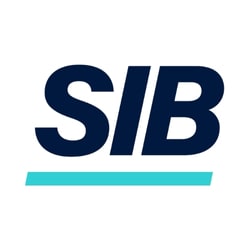Jin Han is the chief legal officer for Pipe Technologies, a San Francisco, California-based fintech that provides a capital platform for small and medium-sized businesses.
Even after decades of industry and regulatory efforts to improve fair access to business financing, major gaps remain, especially for women-, minority-, and immigrant-owned businesses.
Many of these gaps are a result of the structural bias in the current risk rating system, exacerbated further by additional biases introduced in both human-based and algorithm-based (AI-powered or not) underwriting processes. Increasing financial access for underserved communities requires more than just following the law. We must tackle the structural disadvantages for these communities.
Much of the argument around the idea that AI and machine learning can make the underwriting process impartial borders on wishful thinking. No algorithmic process is immune from biases inherent in the data it analyzes, and it is no substitute for thoughtful consideration at the underwriting policy level.
More discussion on how to methodically achieve financial inclusion is sorely needed. Too often, advances in AI and machine learning technology are touted as a cure-all for uneven access to financing. What we need is a plan for how these technologies can actually help, rather than take over, this endeavor to increase financial access.
AI technology is a great tool for ingesting and analyzing data accurately, as well as automating the implementation of fair and well-designed underwriting policies. We believe that combining the efficiency gains from recent advances with thoughtful, human-powered selection of risk data that benefit the members of underserved communities is the winning strategy. Here is how we think about this problem:
Traditional underwriting methodology limits
Traditional risk assessment models relying primarily on FICO or Vantage scores have clear benefits to capital providers. Positive payment and credit history show the business owner’s responsibility, management acumen, and willingness to meet his/her obligations. Relying on credit bureau data also tends to lower review time by underwriters and makes it easier to automate the underwriting process. A good credit score is a reliable indicator of business responsibility that can substitute for time-consuming research and interviews.
Despite these benefits, traditional underwriting models have long been criticized for perpetuating unequal access to financing. As recently as 2023, women- and minority-owned businesses are disproportionately denied financing or more likely to be approved for smaller amounts than applied for, according to data from the Federal Reserve’s Small Business Credit Survey.
The reason for this disparity is straightforward. Women and members of minority or recent immigrant groups tend to be newer entrepreneurs, often operating brick-and-mortar retail businesses with thinner margins. Some recent immigrants may also be debt-adverse and may place less importance on building payment or credit history.
These historical and cultural factors make credit score-based underwriting ill-suited for increasing financial access. While considering a business’s operational history for risk underwriting is value-neutral on its face, its impact is more widely felt by newer entrants to business ownership.
It is not easy to address problems with a system that has clear predictive power and does not exhibit obvious discriminatory intent. But it is simply not possible to solve the financial access problem unless the industry finds a way to reduce its reliance on credit scores and business history.
This is a big challenge. But magical thinking around AI is not the answer. There's a different, more methodical approach to tackling this problem. We've seen it work at Pipe, and I believe it will continue to increase financial access.
A different approach to increasing financial access
Given the obvious benefits, completely removing traditional factors from underwriting is neither advisable nor practical for most fintechs or banks. Even when underwriters consider “alternative” data, such as rent, utility, public records, banking data, and education level, it is uncertain whether the additional dataset leads to more financial inclusion. Some of the alternative datasets must themselves be measured over a long period of time, and datasets centered around education and social circles may well have adverse impacts on certain traditionally underrepresented groups.
Pipe’s approach has been to rely primarily on value-neutral alternative data such as revenue, expense, and money flow trends for underwriting while gradually reducing the length of business history required for funding consideration. Instead of hoping for a groundbreaking new AI-based underwriting process, Pipe used AI and machine learning technologies to ensure data integrity and reliability, as well as predictability of its underwriting models.
With confidence obtained in its model, Pipe has also been able to avoid relying on credit scores as a primary factor in its underwriting. In fact, today we review 100% of our applicants using our revenue-based underwriting model. We will consider introducing credit scores as an element only if it helps us fund more people overall, not less.
Pipe also made significant investments in its tooling to automate the implementation of its credit policy, with nearly 100% of Pipe’s risk decisions being applied through its automatic process. Manual review is generally reserved for situations when our automated compliance, identity verification, or fraud prevention systems trigger a need for additional information from applicants.
With these measures in place, Pipe has been able to underwrite meaningful funding for businesses with as little as three months of operating history. We also built industry-tailored risk models that can underwrite merchants who may exhibit a higher risk profile under the traditional rating system. This achievement enabled Pipe to successfully serve the capital needs of small businesses with high concentrations of women and minority owners, including beauty, services, retail, and restaurant businesses.
Results require tedious work
The historic excitement about AI and other algorithmic technologies should not lead financial services firms to ignore opportunities for greater financial inclusion only achievable through boring, tedious human-powered thinking. With the current state of technology and data availability, AI and other algorithmic technologies are best used for bringing efficiency to well-designed underwriting, compliance and fraud prevention processes. Simply put, AI is there to process the results of critical human thinking.
Human underwriters must focus on methodically curating risk factors that have predictive power and benefit underserved communities. When technology finally catches up, we are convinced that the firms that have thought the hardest about achieving financial inclusion with the current limitations will be the ones that will use it most successfully.





















